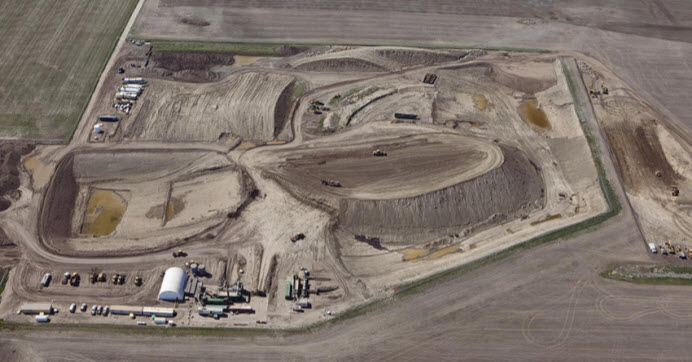If he can, it will be the first time he’s produced a crop since a pipeline burst in Sept. 2013, sending oil spilling into the family’s wheat field.
A lightning strike may be responsible for the oil spill, the North Dakota Department of Health said in a presentation during a 2016 North Dakota Water Quality Monitoring Council conference.

Aerial view of the cleanup site.
Photo: Bill Seuss/North Dakota Water Quality Monitoring Council
Jensen could smell oil in the air before noticing his combines’ tires were covered in it, the Associated Press reported in a recap of the oil spill today. The pipeline belonged to Tesoro, which is now known as Andeavour.
About 840,000 gallons of oil flowed through Jensen’s wheat field. The oil covered 14 acres of wheat, and construction and cleanup equipment affected a total of 48 acres.
Cleanup crews excavated about 1.2 million tons of soil and had to dig nearly 60 feet in some areas to remove contaminated soil, Bill Suess, an environmental scientist with the North Dakota Health Department, told the Associated Press.
The incident is said to be one of largest land-based oil spills U.S. history. The company estimated at the time that the spill would take two years to clean up and cost around $4 million.
Andeavour now estimates the cleanup cost is closer to $93 million.
Farms.com has reached out to the Jensen family for further insight into how it managed the farm during the cleanup process.
Kevin Cederstrom/Associated Press photo